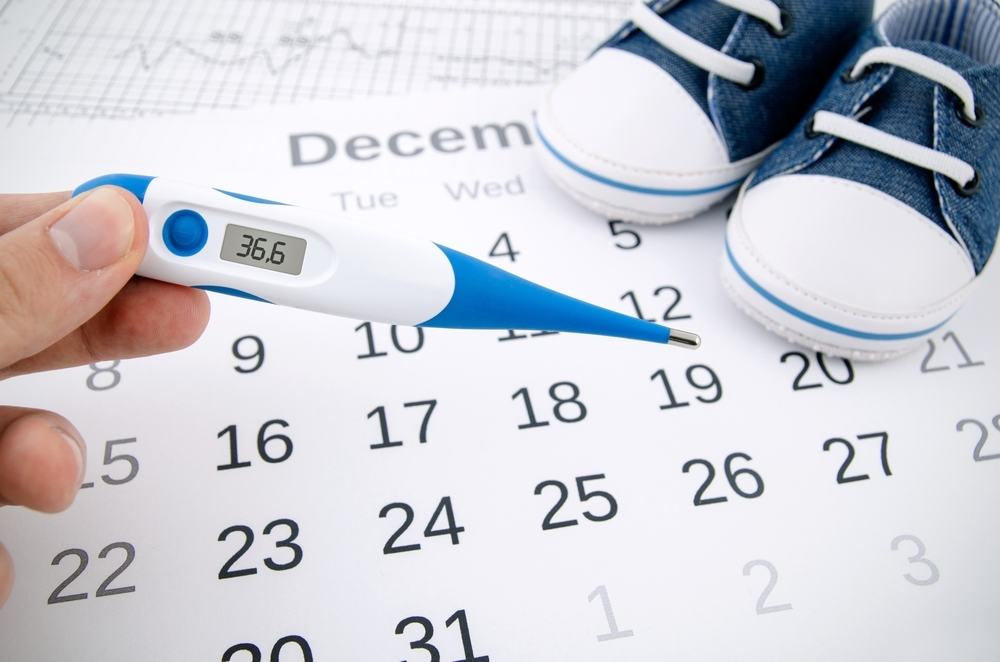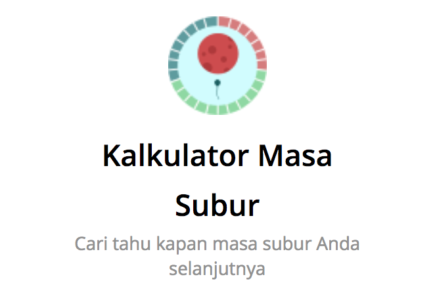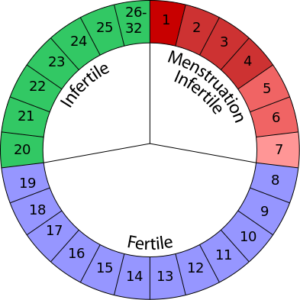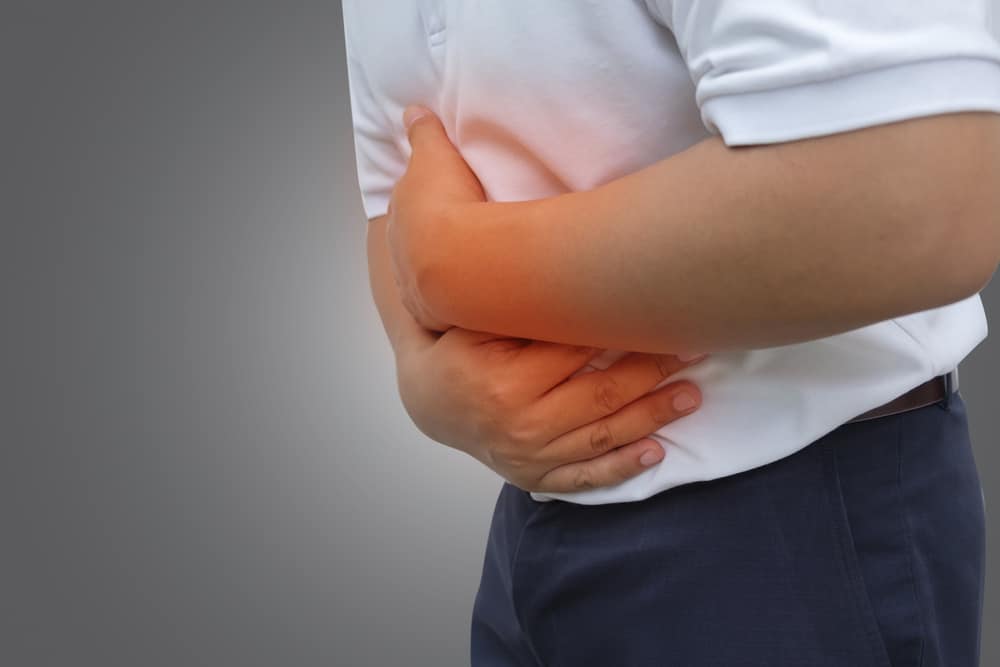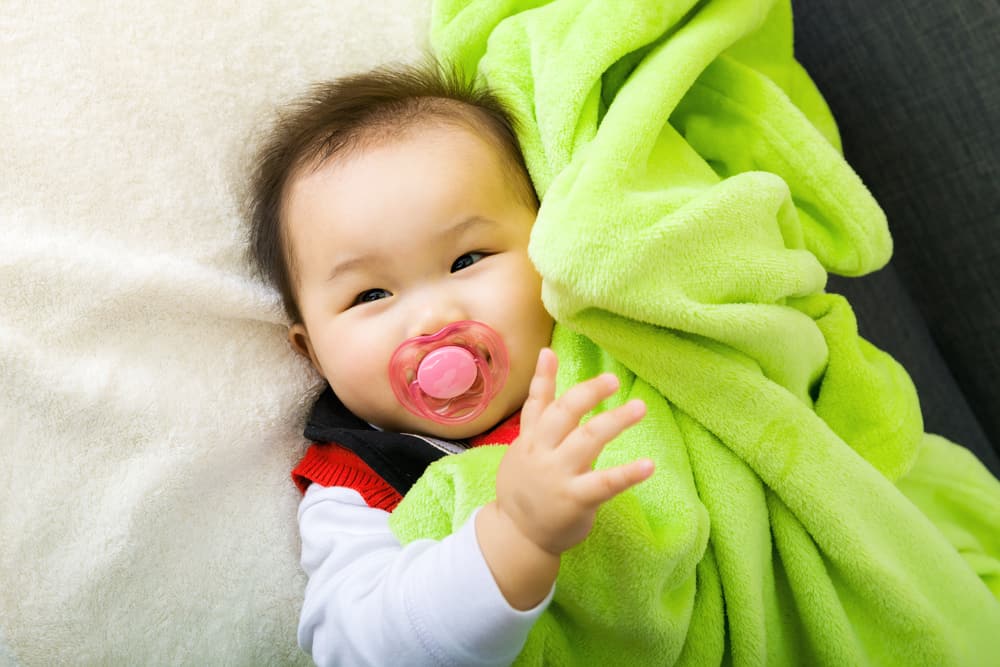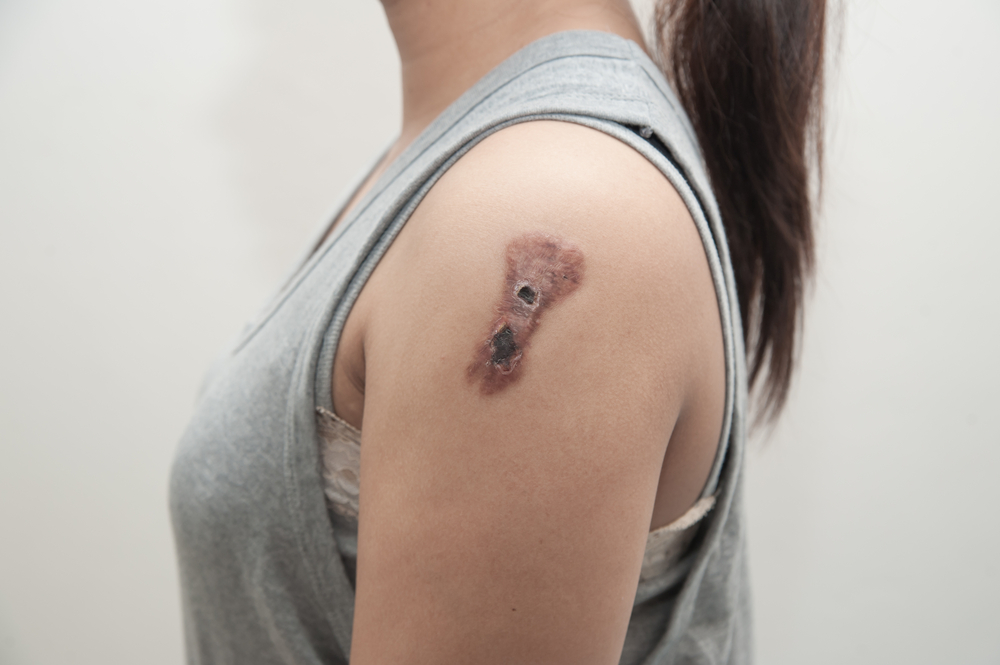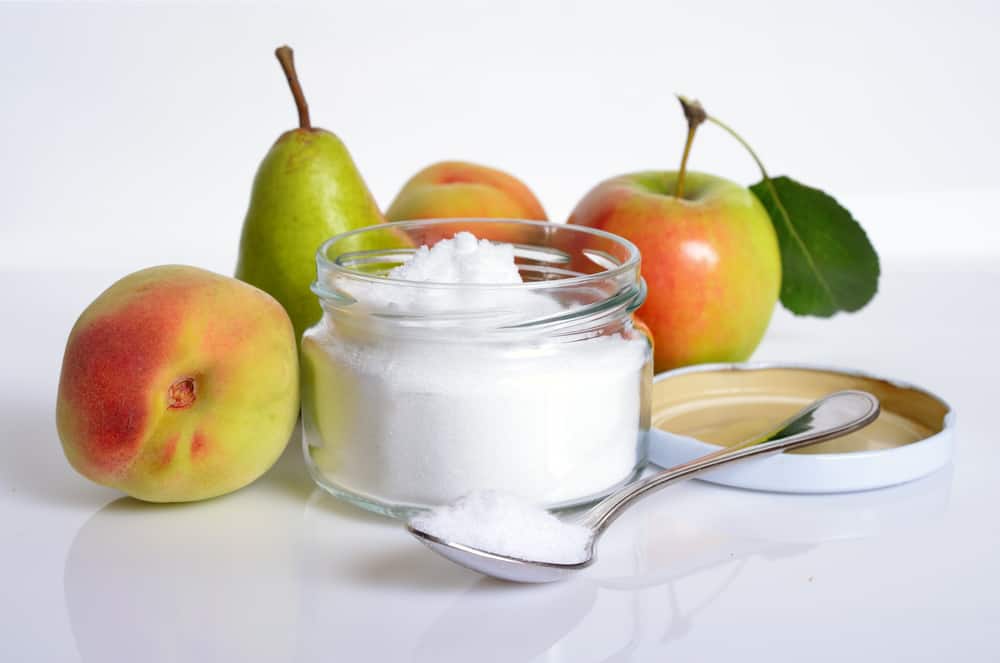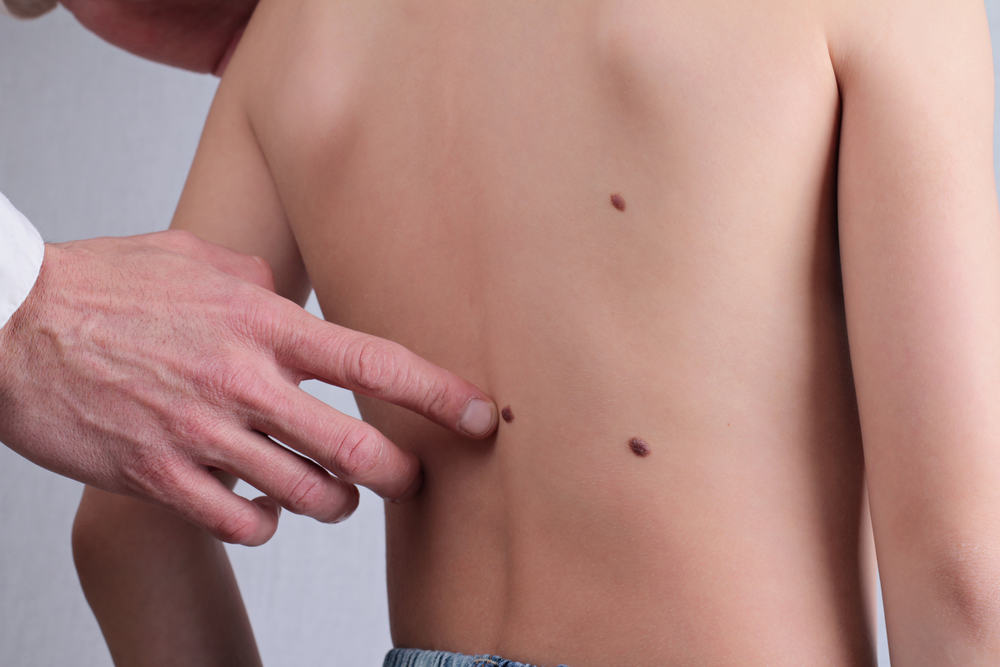Contents:
- Medical Video: Female fertility animation
- The menstrual cycle affects a woman's fertile period
- When does a woman's fertile period occur?
- How to calculate a woman's fertile period
- 1. Know the length of your menstrual cycle
- 2. Calculate the estimated fertile period
- Predicts a woman's fertile period through signs on the body
- 1. The basal body temperature rises slightly
- 2. Changes in the cervical mucus (vaginal discharge)
- 3. Changes in cervical mouth
- 4. Other signs
- When is a woman's infertile period?
- Having sex during menstruation, can you get pregnant?
- Tips on how to get pregnant quickly
- 1. Consult with an obstetrician with your partner
- 2. Change your lifestyle to be healthier
- 3. Find out when ovulation (egg cell release) occurs
- 4. Have sexual relations regularly
- 5. Avoid stress, do it relaxed and calm
Medical Video: Female fertility animation
Pregnancy is a matter of time. The right time in which male sperm cells meet an egg from a woman then conception occurs. In order to get pregnant quickly, you can guess when your fertile period and infertility occur. But how do you calculate fertility?
You can find out when a woman's fertile period, with regard to the menstrual cycle (menstrual cycle). The menstrual cycle can provide clues when a woman's fertile period occurs. At this time, your chances of getting pregnant are very large.
The menstrual cycle affects a woman's fertile period
The fertile period of a woman depends on the menstrual cycle you have. Every woman has a different menstrual cycle.
Menstrual cycle is the range from the first day of menstruation to the first day of the next menstruation. Normally, the menstrual cycle lasts for 21-35 days. But, on average, women have a menstrual cycle of 28 days.
Now, among these menstrual cycles there is a woman's most fertile period. If fertilization occurs (when the egg meets sperm) in this woman's fertile period, then pregnancy occurs. However, if fertilization does not occur, the female egg will decay and come out of the vagina in the form of blood. This is why women every month definitely experience menstruation. Every month at least women will release one egg.
When does a woman's fertile period occur?
In general, a woman's fertile period is around the time of ovulation (when the ovary releases the egg). When does ovulation occur? Ovulation occurs around 12 to 14 days before the menstrual period begins.
The average fertility period of a woman starts on days 10 to 17 after the first day of menstruation, if your menstrual cycle lasts 28 days.
Five days before ovulation and one day where ovulation occurs, is the most fertile period of women. Remember, sperm can only survive for 5 days and the egg can survive only one day. Your chances of getting pregnant increase sharply if you have sex 2 or 3 days before the egg is released, and then 12 to 24 hours after that. Having sex at this time is a great opportunity for you to get pregnant quickly.
Because the menstrual cycle and the fertile period of women vary by individual, then you must calculate your own fertile period. You can use the formula described below, or find out past Hello Healthy Fertility Calculator by clicking on the following picture:
How to calculate a woman's fertile period
One thing you need to calculate a woman's fertile period is a calendar. You need to mark each date on which you menstruate to be able to calculate the fertile period. The following are steps that must be taken to calculate the fertile period:
1. Know the length of your menstrual cycle
To calculate the fertile period, you must mark the menstrual cycle each month and calculate how long it lasts. The length of the menstrual cycle is calculated from day 1, which is your first day of menstruation, until the last day, which is the day before the next menstrual period begins.
Because the length of your cycle can vary slightly from month to month, you should record it for several months to find out the average, at least 8 months if possible.
2. Calculate the estimated fertile period
The next step in calculating the fertile period is to find the longest cycle and the shortest cycle of your menstrual cycle each month. After that:
- Reduce 18 days from your shortest cycle. This is your first day into fertility. For example, your shortest cycle is 25 days, so the first day of your fertile period is the 7th day after the first day of menstruation.
- Reduce 11 days from your longest cycle. This is the last day of your fertile period. For example, your longest cycle is 29 days, then the last day of your fertile period is the 18th day after the first day of menstruation.
Having sex between these times (between 7-18 days after menstruation) is your best chance to get pregnant quickly. This time may vary by individual. Then, what are you waiting for? Please try calculating your own fertile period.
Predicts a woman's fertile period through signs on the body
Don't worry, if you have trouble estimating the fertile period through the menstrual cycle. There are other ways to predict fertility, namely by knowing the signs shown by the body. The body can show signs when it is ready to ovulate. This certainly can help you in knowing the fertile period and planning a pregnancy.
Signs in the body are ovulating, namely:
1. The basal body temperature rises slightly
Basal body temperature is the first body temperature in the morning, before you get out of bed. So, you are advised to measure this basal body temperature before you get out of bed. If you get out of bed and measure your body temperature after that, maybe your body temperature changes and this is not a basal body temperature. The average basal body temperature ranges from 35.5 - 36.6 ° C.
Basal body temperature can change following hormone levels in the body. When the body releases egg cells, the body's hormones can change and this affects the basal body temperature. The body temperature will rise slightly, usually less than one degree, and will remain high until the menstrual period begins.
If your body temperature rises slightly, about 0.4-0.8 ° C from the usual temperature, maybe the body has ovulated in the last 12 to 24 hours. If you record your basal body temperature every day, you may be able to see changes in basal body temperature every day. This can help you in predicting when your body ovulates.
We recommend using a basal body thermometer. This thermometer is more sensitive than the standard and will show lower temperature changes of several degrees.
2. Changes in the cervical mucus (vaginal discharge)
Another way to estimate a woman's fertile period is to see changes in mucus in the cervix (cervix). The hormones that control the menstrual cycle can affect cervical mucus. Right before and during ovulation, changes in the amount, color, and texture of mucus occur. This makes the body easier and more ready to get pregnant.
During ovulation, mucus in your cervix will have a texture that is more elastic, transparent, and slippery, like egg white. This texture can help sperm swim to reach your egg. When the mucus texture in the cervix is like this, it means you are in a fertile period.
The following is a pattern of mucus in the cervix that is common in many women:
- Approaching ovulation: mucus is more sticky, more removed, cloudy, like vaginal discharge
- During ovulation: mucus is wet, slippery, elastic and transparent, like egg white. This usually lasts 3 or 4 days, which is when you have a high probability of getting pregnant.
- After ovulation: mucus is drier and less removed
However, there are several other things that can affect the texture of mucus in your cervix, such as vaginal infections or sexually transmitted diseases, sex drive, and the use of lubricants during sexual intercourse.
3. Changes in cervical mouth
You need to know, during ovulation the cervix will feel softer, taller, and more open. This makes it possible for sperm to enter the cervix and fertilize the egg more.
Changes in the condition of the cervix that is normal and those who are experiencing ovulation may be difficult to distinguish. You may have to examine your cervix every day using one or two fingers to find the difference.
4. Other signs
In addition to the above signs, there are other signs that can indicate that your body is ovulating, namely:
- Mild cramps or pain on one side of the pelvis
- Pain in the breast or breast feels softer
- Stomach feels bloated
- More and more vaginal discharge is issued
- Increased sex drive
- Feel sexier
- The body's scent is better
When is a woman's infertile period?
The most fertile period of women is five days after ovulation and one day after. This is because the egg only lasts for approximately 24 hours after being released. After that, the egg cannot be fertilized, so you enter an infertile period at this time. The problem is, no one knows when exactly ovulation will occur.
Generally in women with a 28-day menstrual cycle, ovulation occurs around the 14th day of the menstrual cycle, as said Michele Hakakha, M.D., an obstetrician and gynecologist, reported by Parents.com.
If fertilization does not occur after the egg is released, the uterine wall will decay and this is called menstruation. Usually, the uterine wall will decay about 14 days later after the egg is released. So, an unfertilized egg will need around a few days to cause menstruation. At this time (between eggs have been released until menstruation), you experience a period of infertility.
Simply put, your infertility is a day that is not included in your fertile period. For example, if according to calendar calculations (as in the example above) your fertility period lasts for days 7-18 after the first day of menstruation, then your infertility is a day other than that day in the menstrual cycle (starting from day 19 onwards until you menstruation again).
Your chances of getting pregnant on the first day of menstruation are almost zero percent. A few days later, it may still be your infertile period. But make no mistake, your chances of getting pregnant are still open, even though the possibility is low. Back again, nobody knows when ovulation occurs.
After the egg is not fertilized and decays (menstruation), your body will then prepare to release the egg again. So, your fertile period will then come back again and your chances of getting pregnant increase again.
Source: New Health Advisor.
Having sex during menstruation, can you get pregnant?
Menstruation occurs when the egg is not fertilized by sperm. Menstruation is the decay of the uterine wall (membrane in the uterus) which occurs almost every month. Generally, menstruation lasts between three to seven days.
On the third day of menstruation, the levels of the hormone progesterone and estrogen will increase. These hormones function to help build the uterine wall back. Around the fourth day of menstruation, the follicle is almost mature, meaning that the ovary is ready to release the egg again for the next menstruation. When the egg is released, it means you have entered a fertile period again and have the opportunity to get pregnant.
Not all women have a menstrual cycle of 28 days and experience it regularly. You may have experienced a time when your menstrual cycle is irregular. This makes your chances of getting pregnant after menstruation becomes difficult to predict.
If you have menstruation for seven days and have sexual intercourse on the seventh day, and then your egg cells are released (ovulation) three days later, you may experience conception and get pregnant. Remember, sperm can survive "waiting to meet the egg" for five days in your body. So, your chances of getting pregnant are still there if you have sex during menstruation.
If you want to know if you are pregnant after having sex, you should consult a doctor. Or, you can also check your own pregnancy at home using test pack a few weeks after you have sex or when you feel late in menstruation. Pregnancy symptoms, such as nausea and vomiting, may appear several weeks early in your pregnancy.
Tips on how to get pregnant quickly
Knowing when a woman's body releases an egg is the right way to get pregnant quickly. But unfortunately, nobody knows exactly when ovulation occurs. For that, you need to try to do many ways to get pregnant quickly.
Some of the quicker ways you can do are:
1. Consult with an obstetrician with your partner
Consultation with an obstetrician can help you find out if you are in the best condition to get pregnant. In addition, your doctor can suggest what you need to do to get pregnant quickly.
2. Change your lifestyle to be healthier
Before becoming pregnant, you need to prepare your body in the best condition. For this reason, lifestyle changes may need to be done, such as staying away from cigarette smoke, stopping drinking alcohol, doing regular exercise, achieving a normal weight, and the most important thing is sufficient essential nutritional needs before pregnancy (such as folic acid).
This is not only recommended for prospective pregnant women, but also prospective fathers. A healthy lifestyle is important to be applied to maintain the quality and quantity of sperm, making it easy to fertilize the egg.
3. Find out when ovulation (egg cell release) occurs
As already explained, the period around ovulation is a fertile period for women. Where, your chances of getting pregnant are very large at this time. For that, you need to know your menstrual cycle to estimate when ovulation occurs.
4. Have sexual relations regularly
Once you know when ovulation is about to occur, it is easier for you to plan when to have sex so that the egg cells meet sperm right and fertilization occurs. Perform sexual intercourse regularly (every two to three days) during the fertile period, especially in the most fertile period.
If you are not sure when a woman's fertile period occurs, you may be able to have sex more often, every day for the second and third weeks after the last menstruation. (Tip: do not wait long for sexual intercourse until the fertile period, this may cause a buildup of dead sperm in semen.)
5. Avoid stress, do it relaxed and calm
Some couples may be stressed to reach pregnancy. This is certainly not good. Stress will only make pregnancy more difficult to achieve. Instead, don't think too much about having sex to get pregnant quickly, this might create a burden for you and your partner.

